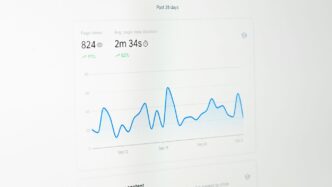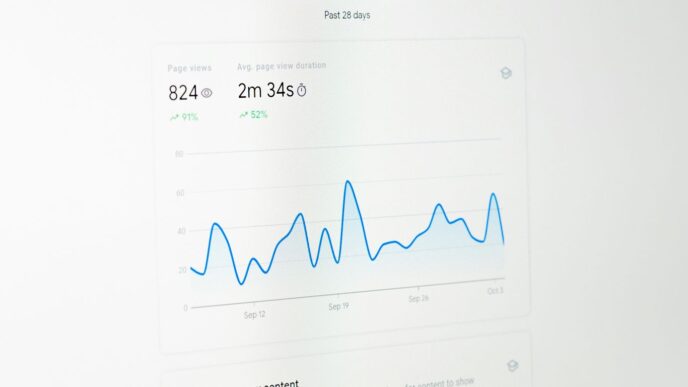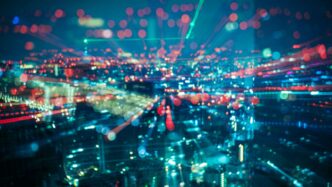The Blurring Lines: AI Images vs Real Images
It feels like just yesterday we were marveling at how AI could create images that looked… well, a bit off. You know, the classic tell-tale signs like extra fingers on a hand or text that looked like it was typed by a toddler. Those were the days when spotting a fake was almost too easy. But wow, things have changed fast. Now, AI models are getting so good, so quickly, that those obvious mistakes are becoming rare. It’s like a constant game of catch-up.
The Allure of Digital Perfection
Think about scrolling through your feed. You see these incredibly polished images – perfect sunsets, flawless portraits, dream vacations. Part of that polish comes from AI. It can create visuals that are almost too good to be true, hitting an aesthetic that’s hard to achieve in real life without a lot of effort and expense. This digital perfection is captivating, drawing us in with its flawless execution. It’s easy to see why people are drawn to these idealized visuals; they represent a kind of unattainable beauty or experience.
A New Era of Visual Storytelling
This shift means we’re entering a whole new chapter in how stories are told visually. Anyone can be a creator now, using simple text prompts to generate complex scenes. It’s amazing for creativity, opening up possibilities for artists, designers, and even just everyday people wanting to express an idea. We can visualize concepts that were previously impossible to capture on camera. This democratizes image creation, but it also means the content we see is a mix of what’s real and what’s been conjured by a machine.
The Lingering Question of Authenticity
So, here’s the big question that keeps popping up: how do we know what’s real anymore? When an image looks convincing, but it was actually made by AI, it makes you pause. It’s not just about spotting a fake; it’s about what that means for trust. If we can’t easily tell the difference, how do we know if we’re seeing a genuine moment or a cleverly constructed illusion? This uncertainty is becoming a regular part of our online experience, making us question the very nature of the images we consume every day.
Navigating the Visual Landscape
It’s getting harder and harder to tell what’s real online, right? You scroll through your feed, and everything looks so perfect – beaches, food, people. It’s easy to start comparing your own life to these super polished images, and honestly, that can make you feel pretty crummy. Like, why doesn’t my Tuesday morning coffee look like that influencer’s latte art? It’s a common trap, and it’s important to remember that social media is usually just a highlight reel, not the whole movie.
Cultivating a Discerning Eye
So, how do we deal with all these visuals? We need to get better at looking closely. It’s not about being suspicious of everything, but more about being aware. Think of it like learning to spot a fake designer bag – you start to notice the little things.
Here are a few things to keep in mind:
- Know the basics: Understanding how AI makes images can help. It’s like knowing how a magic trick works – it doesn’t make it less cool, but you’re not fooled by it.
- Look for the real stuff: Seek out accounts that show everyday life, not just the perfect moments. People who share their messy kitchens or bad hair days tend to feel more genuine.
- Be kind to yourself: Your life is your life. Don’t let a screen full of filtered perfection make you feel like you’re not doing enough. Everyone has their ups and downs.
Seeking Genuine Connections Online
When we see images, especially on social media, we often look for a connection. We want to relate to the person or the situation. But when images are AI-generated or heavily edited, that connection can feel a bit hollow. It’s like talking to someone through a distorted voice changer – you might hear them, but it’s not quite them.
- Focus on the story: What is the image trying to say? Does the story feel real, even if the image itself is a bit off?
- Check the source: Who is posting this? Do they usually share authentic content, or are they known for highly produced visuals?
- Engage with people, not just pictures: Sometimes, the best way to find genuine connection is to look beyond the image and engage with the person behind it through comments or messages.
The Impact on Self-Perception
This is a big one. Constantly seeing idealized images, whether they’re AI-created or just super-edited photos of real people, can really mess with how we see ourselves. It sets up this impossible standard. You might start thinking, "Why don’t I look like that?" or "Why isn’t my life that exciting?" This constant comparison is a major reason why people feel anxious or inadequate when they’re online. It’s important to remember that these images are often not a reflection of reality, but a carefully constructed fantasy. Our own experiences, with all their imperfections, are what make us unique and valuable.
Unpacking the Technical Detectives
Okay, so we’ve talked about how things feel off, but what about the actual nuts and bolts? This is where we get a bit more technical, looking for the digital breadcrumbs AI might leave behind. It’s like being a detective, but instead of dusting for fingerprints, we’re looking at pixels and code.
The Evolving Arms Race in Detection
It’s a constant back-and-forth, isn’t it? AI gets better at making images, and then people get better at spotting them. Think of it like a game of cat and mouse. The tools we have now are way more advanced than they were even a year ago. They’re designed to catch those subtle tells that our eyes might miss.
- AI models are trained on massive datasets, learning patterns of what ‘real’ looks like.
- Detection tools analyze these generated images for inconsistencies that deviate from those learned patterns.
- As AI improves, detection methods must also evolve to keep pace, creating a continuous cycle of innovation.
Technical Fingerprints and Pixel Analysis
Every image file has a kind of digital DNA. When AI creates an image, it often does so in a way that’s different from how a camera captures light and detail. This can leave behind specific patterns. For instance, real cameras sometimes have a bit of random ‘noise’ – tiny imperfections. AI might try to replicate this, but it can end up looking too perfect, too uniform, or have strange, repeating structures that a real camera wouldn’t produce. Some tools can spot these unnatural patterns, almost like finding a signature that wasn’t supposed to be there.
Beyond the Obvious: Subtle AI Artifacts
Sometimes, the clues aren’t in the big picture but in the tiny details. AI can struggle with certain things. For example, hands are notoriously tricky for AI – you might see too many fingers, weird joints, or just an overall unnatural look. Lighting can also be a giveaway; maybe the shadows don’t quite match the light source, or reflections in eyes look a bit off. Even the way text appears in an AI image can be strange, with letters looking slightly warped or nonsensical. These small, overlooked details are often the most telling signs of artificial creation.
The Human Element in AI Detection
Intuitive Pattern Recognition
Sometimes, you just get a feeling about an image, right? It’s not always about spotting a weirdly drawn hand anymore, though that used to be a dead giveaway. AI is getting way better at the small stuff, like making sure everyone has the right number of fingers or that text on signs actually makes sense. But even with all the tech, AI still has trouble with the messy, unpredictable nature of real human behavior. Think about a crowd scene – in real life, people aren’t all perfectly spaced or looking in the exact same direction. They fidget, they chat, they react differently. AI often creates a kind of uniformity that feels a bit off, even if you can’t pinpoint exactly why. It’s like looking at a painting that’s technically perfect but lacks a certain spark. Our brains are wired to pick up on these subtle inconsistencies, even if we can’t articulate them.
Behavioral Inconsistencies in AI
AI models are trained on vast amounts of data, but they don’t truly understand human interaction. This leads to some common slip-ups:
- Crowd Dynamics: AI might generate crowds where everyone looks too similar in age, dress, or even expression. Real crowds are a mix. Also, people in a crowd don’t all stare at the same point unless something specific is happening. AI can make this look unnatural.
- Emotional Expression: A person in a photo might be smiling, but does the smile look genuine given the context? AI can sometimes produce smiles that feel a bit too perfect or don’t quite match the supposed emotion of the scene.
- Movement and Spacing: In photos of people interacting or moving, AI might place them in ways that feel a little too neat or symmetrical. Real life is usually a bit more chaotic and less organized.
Trusting Your Gut Instincts
While technical tools are getting better, they aren’t foolproof. The creators of AI are constantly improving their systems, making it a bit of a cat-and-mouse game. What works to detect AI today might not work tomorrow. This is where our own judgment comes in. If an image or video feels staged, or if the people in it seem to be acting in a way that doesn’t quite ring true, it’s worth paying attention to that feeling. It doesn’t mean the content is definitely fake, but it’s a good reason to dig a little deeper. Asking questions like:
- Does this scene look like something that could actually happen?
- Are the people in it behaving in a way that makes sense for the situation?
- Is there anything about the overall composition that feels too perfect or too generic?
These kinds of questions, combined with the technical checks, can help us get closer to the truth in a world where visuals can be easily manipulated.
AI’s Creative Potential and Ethical Considerations
Unprecedented Tools for Innovation
AI is really changing the game for creators. Think about it: you can now visualize complex ideas or test out different looks for a product without needing expensive photoshoots. It’s like having a super-powered sketchbook that can instantly show you what you’re imagining. For example, a small business owner could use AI to generate a whole range of marketing images for a new product before it’s even made, saving tons of time and money. This opens up creative avenues that were previously out of reach for many.
Bridging the Gap Between Worlds
So, how do we make sense of all this? It’s not just about spotting AI images versus real ones. It’s about figuring out how they can work together. AI can definitely boost our own creative efforts, but that doesn’t mean we have to lose the real stuff. We can aim for a digital world where both AI-assisted creations and genuine human experiences have a place. It’s about finding that sweet spot where new tech helps us express ourselves without replacing the value of what’s actually happened.
The Responsibility of Content Creation
With all this new power comes a need for careful thought. When we create and share images, whether they’re from our own camera or generated by AI, we need to be mindful. It’s easy to get caught up in the excitement of what AI can do, but we also have to consider the impact. Are we being clear about what’s real and what’s not? Are we using these tools in ways that are fair and honest? Being responsible with content creation means thinking about the story behind the image and how it might be perceived. It’s about building trust in a world where visuals can be easily manipulated.
Forensic Scrutiny for High-Stakes Reporting
When the stakes are really high, like in serious news reporting, we can’t just take a picture at face value. It’s not enough to just look at it and think, ‘Yeah, that looks real.’ We have to dig in, like a detective looking at a crime scene. This means treating every image or video as potential evidence that needs a thorough check.
Deep Investigation Techniques
For critical stories, the initial feeling that something is off is just the starting point. We need to systematically break down what feels wrong and check it against facts. It’s about building a case, not just finding one single mistake. Think of it like putting together a puzzle where each piece needs to be verified.
- Check for unnatural perfection: Does a person look too flawless for the situation? Think about a protest leader with perfect makeup or someone in a disaster zone with immaculate hair. That’s a red flag.
- Look at the details: Zoom in close on faces. Real skin has pores and tiny imperfections. AI often smooths everything out too much. Check clothing for natural wrinkles and fabric texture. Hair should look like individual strands, not just a painted-on shape.
- Context is key: Does the image make sense with what we know about the event? For example, if a photo shows a specific building, does that building actually exist there? If it’s about weather, does the weather in the picture match historical records for that day and place?
Comparative and Contextual Analysis
This is where we really start comparing things. We look at the image in relation to other information we have.
- Compare with known images: If it’s a picture of a person, find other verified photos of them. Do they look similar? Are the "imperfections" consistent with how they normally look?
- Check the environment: Does the background match the claimed location? Are the architectural details correct? Are people dressed appropriately for the time and place?
- Timeline check: Could the event shown have happened at the time claimed? Does the lighting suggest a specific time of day that matches the story?
The Role of Expert Consultation
Sometimes, even after all this checking, it’s still not clear. That’s when we bring in the pros. Digital forensics experts have special tools and knowledge to spot things the rest of us might miss. They can analyze the image at a pixel level, looking for mathematical patterns that AI might leave behind. Consulting with these specialists can provide a more definitive assessment when the integrity of information is paramount. It’s like having a second opinion from someone who really knows their stuff, helping us make a more informed judgment about whether the visual content is trustworthy.
Finding Balance in the Digital Age

It feels like we’re constantly trying to figure out what’s real and what’s not online these days. With AI getting so good at making images, it’s easy to get a little overwhelmed. But honestly, it’s not all doom and gloom. We can actually learn to live with both AI-generated pictures and real photos without losing our minds.
Embracing Both Realities
Think about it: AI gives us some pretty amazing tools. Artists can create things they never could before, and businesses can show off products in cool new ways without spending a fortune. It’s like having a super-powered paintbrush. But that doesn’t mean we should forget about actual photos. A picture of your kid’s messy art project or a sunset you saw on vacation? Those have a different kind of value. They’re tied to actual moments and feelings. The trick is to appreciate what AI can do for creativity while still holding onto the importance of genuine, lived experiences.
Valuing Lived Experiences
Sometimes, seeing all those perfect AI images or super-filtered photos can make our own lives feel a bit… meh. It’s easy to fall into the trap of comparing. Remember Sarah, who thought her vacation photos were boring after seeing an AI beach scene? That’s a real thing that happens. We need to remind ourselves that social media is usually a highlight reel, not the whole movie. Our own experiences, even the messy or ordinary ones, are what make our lives unique. They’re the stuff that builds real connections with people.
Meaningful Engagement with Visuals
So, how do we actually do this? It starts with being a bit more aware. When you see an image, just take a second. Ask yourself what story it’s trying to tell. Is it meant to inspire awe with its perfection, or does it feel like a genuine moment? We don’t need to be suspicious of everything, but a little bit of thoughtful looking goes a long way. It’s about enjoying the cool stuff AI can make while still cherishing the real moments captured by a camera or, even better, by our own eyes. It’s about finding a way to enjoy the digital world without letting it make us feel bad about our own reality.
Finding Our Way in a Blurry World
So, where does this leave us with all these AI images popping up everywhere? It’s a bit like trying to figure out if that amazing sunset photo is real or something a computer dreamed up. The line keeps getting fuzzier, and honestly, it can be a little unsettling. But maybe instead of getting too worried about what’s fake and what’s not, we can just try to enjoy the creativity. AI can make some really cool stuff, and that’s neat. At the same time, let’s not forget about the real moments, the actual experiences that make up our lives. Those are pretty special too. Ultimately, it’s about finding a balance. We can appreciate the digital art while still valuing our own stories and connections. When you see an image, whether it’s from a camera or a computer, just take a second to think about what it’s showing you. Every picture has a story, and engaging with them thoughtfully makes our online world a bit more interesting, and maybe even a little more real.














